Table of Contents
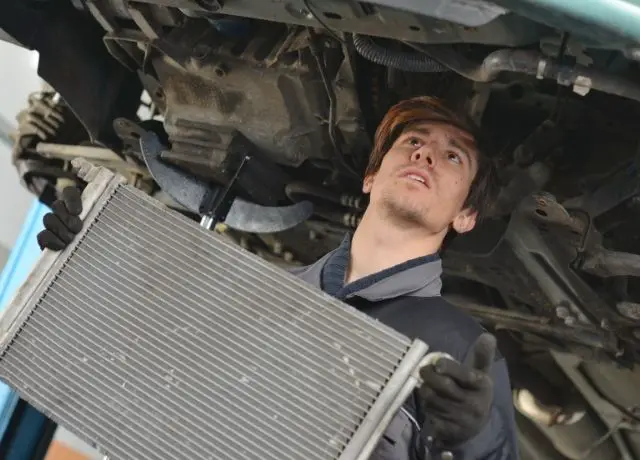
Dirt accumulates rapidly on cars, especially in urban areas. If a radiator becomes clogged, its efficiency will drop rapidly. If you suspect a problem with the car’s cooling system, check the radiator first.
When radiators get clogged, the engine overheats and loses power. Radiators may be cleaned quickly and easily in just a few simple steps.
Here, we will examine two nontraditional approaches to flush radiator that are efficient both financially and in terms of time savings. The two ingredients, baking soda, and vinegar will be combined to create a car radiator cleaner.
To make things easier for you, we’ve broken down the process into two steps. We’ll first cover how to clean a radiator with baking soda, and then the radiator with vinegar.
But before we step into our detailed guide, you need to learn what a does in the car, why a radiator gets clogged, and clogged radiator symptoms.
How To Clean Battery Terminals With Baking Soda- 4 Easy Steps

What Does a Radiator Do In a Car?
A car’s radiator is a part of the car’s cooling system that helps maintain engine temperature. It’s a metal box mounted on the front of the vehicle, and there are tubes going all the way through it. To dissipate the heat generated by a car’s engine, the coolant flows through the radiator as the engine runs.
The radiator fins then cool the coolant as air flows over them. This coolant then makes its way back to the engine, where it is used to soak up even more heat in an endless cycle.
The engine’s operating temperature is maintained by a car’s radiator. Overheating can do serious harm to the engine, so a functioning radiator is essential.
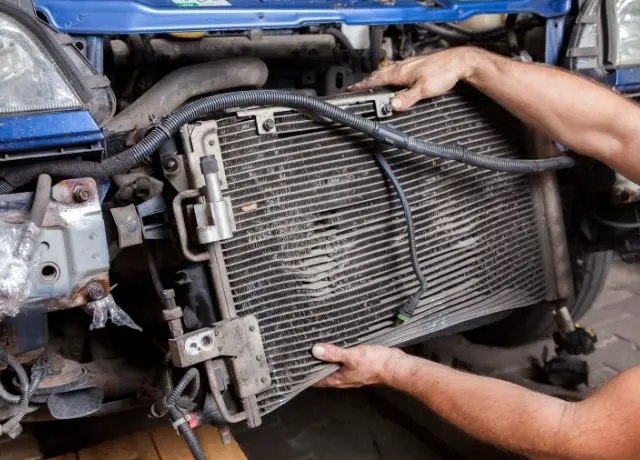
Why Does a Radiator Gets Clogged?
Radiator clogs can occur for a number of different causes. The most common reason for a clogged radiator is an out-of-date car’s cooling system or one that hasn’t been properly maintained.
Similarly, rust and sediments build up in the radiator’s pipes and fins when the engine is not used for an extended length of time or the fluid is not replenished.
The accumulation of all the debris and scale from the engine coolant on the radiator’s inner surface is another common cause of the blockage. Both neglecting routine vehicle maintenance and driving through excessive amounts of sand or mud might contribute to this problem.
If these issues aren’t addressed quickly, they could result in serious engine damage. Hence, it is essential for you to understand how to clean a radiator with baking soda or by using the best homemade radiator flush.

Symptoms of a Clogged Radiator:
If you are like most drivers, you probably don’t think about your car’s radiator until there is a problem. And by then, it may be too late. So it’s important to be aware of the symptoms of a clogged radiator so you can take action before it’s too late.
Some of the most common symptoms of a clogged radiator include:
- High-temperature reading: The most common symptom of a clogged radiator. The radiator is responsible for cooling the engine, If the radiator is not able to properly transfer heat from the engine to the air, then the car can overheat. This can be due to dirt and debris build-up on the radiator fins that prevents them from doing their job.
- Leakages: Rust buildup in the radiator might cause it to crack within those areas. Leaks into the radiator can occur as a result of these flaws. Radiator damage is possible if leaks are not taken care of in a timely manner.
- Poor cabin heating: The cabin heater of a car depends on the hot fluid passing through the heater core and then the resulting hot air being blown into the cabin by a blower fan. A clogged radiator affects the fluid passing through the heater core leading to poor cabin heating.
These are the three most common symptoms of a clogged radiator. Some other symptoms include shifting issues, fluid discoloration, exterior fins blocked, water pump malfunction, and damaged head gasket.
If you experience any of these symptoms, clean your car radiator as soon as possible. A clogged radiator can cause extensive damage to your engine if not addressed in a timely manner.
How To Clean a Radiator With Baking Soda?
One of the most common and simplest methods is to use baking soda to scrub a radiator. Baking soda is a good cleaning agent because of its ability to remove stains. To use baking soda to clean a radiator, simply follow the methods outlined in the following paragraphs.
Step-1) Safety First:

As you are going to use baking soda to clean a radiator, you will need to cover yourself up. Wear rubber gloves to cover your hands and to avoid any damage.
Similarly to protect your eyes, wear goggles because baking soda could end up squirting into your eye while you clean a radiator with baking soda.
Step-2) Cool Down the Car:
You shouldn’t start cleaning your radiator right away if you have driven your car recently. To touch the engine at this time would be dangerous due to the extreme heat. You should avoid taking a risk like that. To cool down the engine, park it in your garage for some time.
The radiator should not be cleaned until the engine is entirely cold or at a temperature that is safe to touch.
Step-3) Drain the Coolant:
Make sure the engine is completely cool before beginning to remove the radiator cap and drain the coolant. Take a bucket and place it beneath the radiator. The objective is to keep your garage from getting stained.
The bucket will gather all the liquid that falls from the radiator. This way the loose dirt will also be eliminated from the radiator.
Open the drain plug and let the radiator bleed. The radiator will drain up until it is empty. Collect the coolant, dispose of it, and close the valve.
Step-4) Prepare the Best Homemade Radiator Flush:
After the radiator is entirely emptied, you can make a cleaning solution. Mix 5 spoons of baking soda into 1L of water. Stir the solution well, there should be no air pockets in the cleaning mixture.
Remove the radiator cap and pour the cooling solution into it. Close the cap and start the engine until the engine heats up. The engine will heat up faster if you repeatedly press the accelerator pedal.
Dirt and rust can be removed from the pores with the cleaning solution. Until the radiator is clean and smooth, it will break down the debris from the radiator walls.
Step-5) Drain the Cleaning Solution:
Just like we did earlier. Turn off the engine and allow it to cool down for a few minutes. Open the drain valve and remove the cleaning solution after the engine has reached its ideal operating temperature.
The radiator has just been cleaned. Take off the cap and add some distilled water. Make a few trips to the radiator. At this step, your is entirely cleansed. Close the drain plug, now you may refill the new coolant into the radiator.
To get better and quicker results you can also try a cleaning solution using baking soda and vinegar.
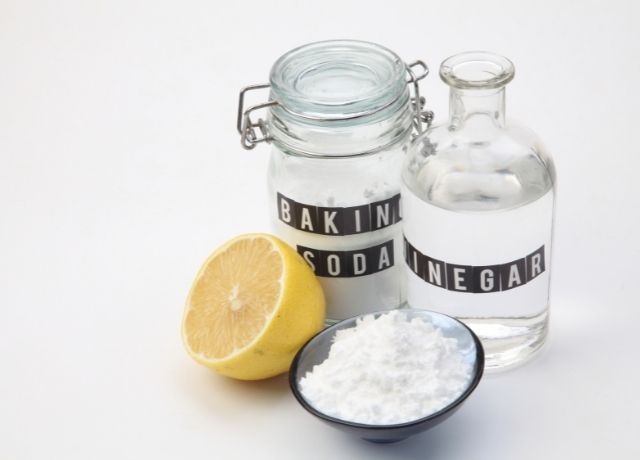
Baking Soda and Vinegar Together:
If your car radiator was not maintained properly and contains a lot of dirt and rust, a simple cleaning with baking soda will not be adequate. Repeat the procedure as necessary until the radiator is clean.
To avoid these extra steps, you can combine baking soda with vinegar to create a much better vinegar radiator flush.
These two ingredients work together quite effectively to generate a cleaning solution. Baking soda softens corroded pieces while vinegar acts as an acid to remove stains. So, the combined solution of vinegar and baking soda delivers quicker and better results.
To create this solution, add 6 tablespoons of vinegar with 6 tablespoons of baking soda along with a liter of water.
Follow the steps mentioned above. Pour the car radiator cleaner into the radiator. If you notice a foamy or bubbly reaction, it is a sign that the solution is reacting with the rust and the dirt.
To get the chemical to boil and do its job correctly, follow the same techniques you used to warm up the engine. After a few minutes switch off the car, let it cool down, and then drain the car radiator cleaner. The radiator is dripping with a solution, as you can see.
Open the cap and flush the radiator using distilled water a few times. Once satisfied, close the valve and pour a new coolant into the radiator and close the radiator cap.
Congratulations, you just learned how to clean a radiator with baking soda and vinegar.
This was not all, now let’s have a look at how to clean a car radiator with vinegar in detail.
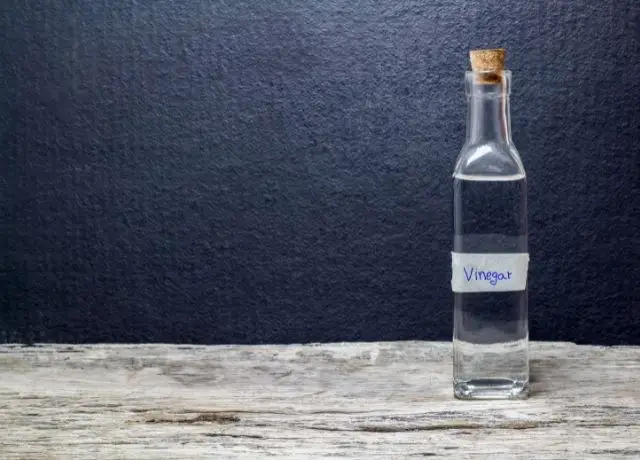
How To Clean a Car Radiator With Vinegar:
Just like a baking soda. Vinegar is known for its cleansing qualities. One of the quickest, easiest, and least expensive ways to clean a radiator is to use vinegar to flush it. Vinegar may also be used to clean windshield wipers and windshields, but here we will cover how you can clean a car radiator with vinegar. Just follow the steps listed below:
Step-1) Safety First:
Just like we did above, you will need to cover yourself up. Wear rubber gloves to cover your hands and to avoid any damage. Wear goggles to protect your eyes because vinegar could result in irritation and redness in your eye.
Step-2) Cool Down the Car:
If you have driven your car a while ago, you should not start flushing the radiator with vinegar right away. At this moment you won’t be able to touch the hot engine bay. Avoid doing something as risky as that. Just park the car in your garage shed and let the engine bay cool for an hour or two.
Don’t start flushing radiator with vinegar unless the engine block is completely cold or at a normal temperature to touch it.
Step-3) Drain The Dirty Coolant:
Prepare to drain the radiator coolant once the engine block has cooled to the touch. Place a bucket beneath the radiator and secure it with duct tape.
It’s because you don’t want your garage to get soiled. The dirty coolant will fall into the bucket beneath, which will collect it. As a result, the radiator will also be cleaned.
Let the radiator leak by opening the radiator drain valve. Eventually, the radiator will run out of water and need to be replaced. After removing the coolant and disposing of it properly, shut off the valve.
Step-4) Prepare a Vinegar Radiator Flush :
Prepare a vinegar radiator flush as soon as the radiator is empty. A vinegar radiator flush is not necessary. A gallon of distilled vinegar and some pure distilled water is all that is required.
Make a half-fill of the radiator by removing the radiator cap. The radiator should be filled to the top with distilled vinegar, and the remaining space should be filled with.
Start the engine and wait for the engine to heat up before removing the cap. The engine block will warm up faster if you press the accelerator a few times.
Vinegar radiator flushes assist to remove dirt and rust from clogged pores. Particles that have accumulated on the radiator walls can be removed by using this product.
Turn off the vehicle after around 10 to 15 minutes and leave it for the night.
Step-5) Drain The Vinegar Radiator Flush:
Again, open the radiator drain valve and let them bleed to occur in the morning. Eventually, the radiator will run out of distilled water and need to be replaced.
The radiator has just been cleaned. Pour only distilled water into the radiator’s cap. Repeatedly running pure distilled water through the radiator should clear the problem. This is the final stage in the process of cleaning your engine’s cooling system. Now that the valve has been closed, you can add fresh coolant to the radiator.
We are not done here, let’s find out how you can maintain your radiator to prevent any future problems:
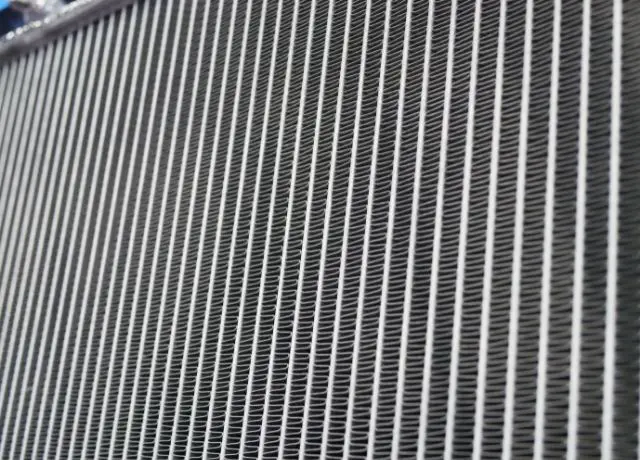
Radiator Maintenance Tips:
It’s not uncommon for folks to believe that the radiator doesn’t require any maintenance. There is nothing else to do, isn’t there? To keep your car radiator in good working order, here are a few helpful hints to keep it that way.
Keeping your radiator clean and well-maintained will help you get more use out of it and improves longevity. The following is a radiator maintenance checklist:
Flush Using the Best Homemade Radiator Flush:
Keep flushing the radiator with the best DIY radiator flush more frequently to keep it in good condition. Every two years or 50,000 miles, flush your green coolant (officially known as an inorganic additive coolant).
Likewise, the modern acid technology coolant needs to be flushed every 150,000 miles or 5 years.
Again before taking any step, consult your owner’s manual to know when to flush the radiator.
Always Top Up The Radiator Coolant:
The radiator’s coolant level decreases over time. For a variety of reasons, this may be the case. Make it a habit to check the coolant level in your radiator every week. In this manner, the status of the radiator can be understood.
You can get the radiator checked if the level lowers quickly. This will help to avoid costly repairs in the future.
The Radiator Cap is Attached Properly:
You can tell if the radiator cap is correctly fastened by checking the radiator once a week. The coolant chamber can be depressurized by an incorrectly fitted radiator cap, resulting in leaks and other issues.
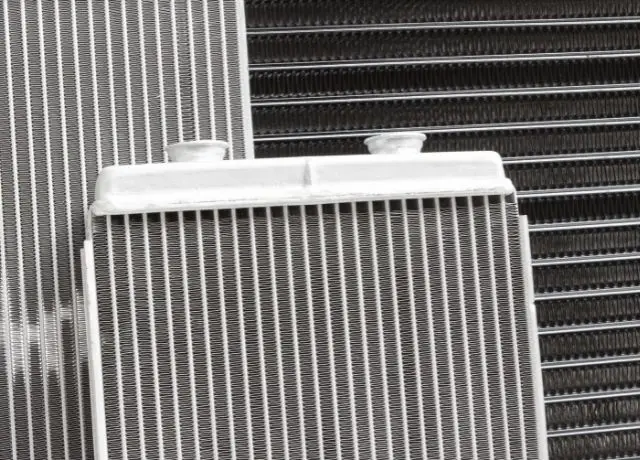
Benefits of Flushing Radiator With Vinegar:
You may be asking why the age-old vinegar radiator flush method should be given another shot. It turns out that this technique can be used to address a variety of issues! Rinsing radiators with vinegar has a number of advantages, the most popular being.
- Clearing of rust and build-up: Flushing radiator with vinegar cleans the rust and build-up in the radiator halfway. This prevents overheating issues that could happen if these deposits remain unattended.
- Instant check-up: you will get an instant checkup while you flush radiator. This will aid in finding the remaining problems so that you can tackle them in one go.
- Clean the radiator of contaminants: Flushing radiator with vinegar help to get rid of old coolant that could contain contaminants.
- Prevent foam and rust from forming: The more often you flush radiator the better you prevent the rust and foam from forming in the radiator halfway.
Frequently Asked Questions:
Q: Is Vinegar Flushing Radiator Safe?
A: Although vinegar is a weak acid, it has the potential to erode metal and degrade rubber hoses. In order to flush out the entire system, you need to allow it to flow through all of the hoses and water pumps. It’s possible to cleanse the system without disconnecting the radiator, but it’s ideal to do so.
As a result of this, is a safe and effective method. If you’re having problems with your radiator, this is a better car radiator cleaner than baking soda.
Q: Is Flushing Radiator With Baking Soda Safe?
A: Because baking soda is a chemical base, it is considerably safer to use it in the system. With the right amount and flushing, you shouldn’t have a problem while you clean a radiator with baking soda.
Q: Can I flush Radiator Myself?
A: You can, without a doubt! The most important thing is to wear rubber gloves and safety goggles to keep any fluid from getting into your eyes.
Apply everything you’ve learned till now. As long as you can reach the radiator and unhook the line without having to use a jack, you’ll be fine with just vinegar or baking soda in a bucket. Find a means to dispose of the radiator coolant safely.
Q: Is Flushing Radiator With Vinegar Or Baking Soda Necessary?
A: A vehicle radiator’s performance can degrade over time, even if it was brand new when you bought it. If you notice any of the symptoms associated, it may be time to flush the radiator to get it back in working order.
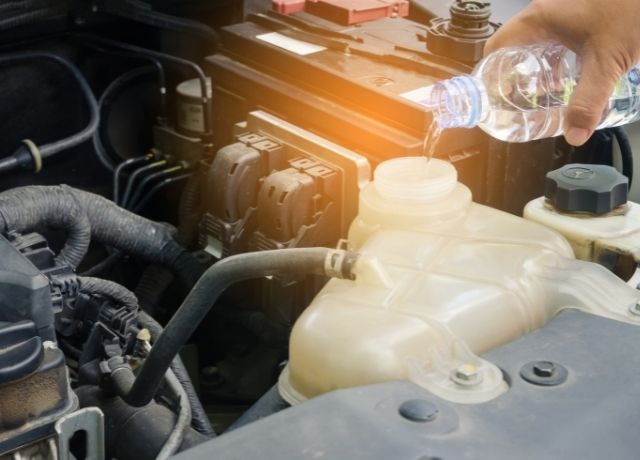
Conclusion:
In the end, remember these methods are the cheapest, easiest, and quickest to clean the radiator with the best homemade radiator flush. These methods are entirely safe for your car engine.
Though you have just cleaned the radiator, don’t let it unmaintained for a long time.
Make it your habit to check the level of coolant once a week and try this best homemade radiator flush more often to prevent future problems.
I hope now you can clean a radiator with baking soda and vinegar.
Thank You.




























































12 thoughts on “How To Clean a Radiator With Baking Soda 2023 Unusual Ways – Flawless Car Guide”